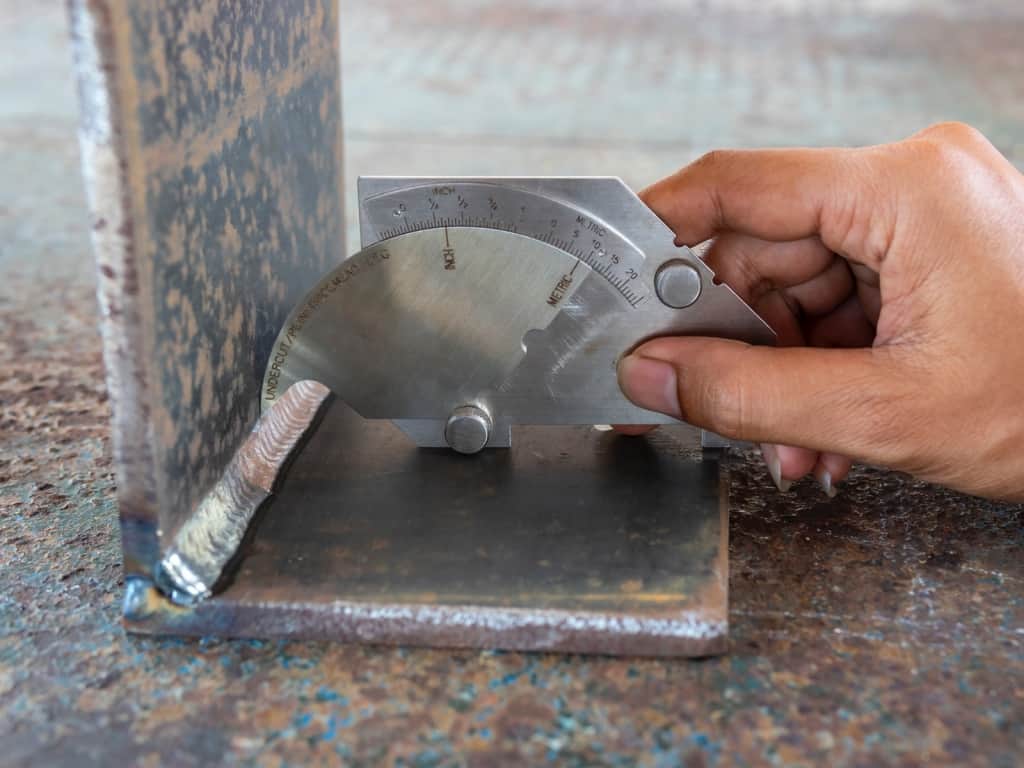Preventing Weld Undercut Demystified: Techniques for Success
Preventing Weld Undercut Demystified: Techniques for Success
Blog Article
Comprehending the Causes and Solutions for Undercut Welding in Metal Construction Procedures
In the realm of steel construction procedures, the incident of undercut welding presents a substantial obstacle that requires a thorough understanding of its reasons and sensible remedies. The detailed interaction of numerous variables throughout welding procedures can cause this unwanted phenomenon, affecting the structural integrity and overall quality of the bonded joints - Preventing weld undercut. By studying the origin triggers of undercut welding and checking out effective remedial measures, makers can boost the requirement of their craftsmanship and guarantee the production of remarkable steel elements
Common Reasons of Undercut Welding
Regularly ignored in metal manufacture, undercut welding takes place because of various variables that require precise attention and expertise to be properly alleviated. One typical reason of undercut welding is extreme heat input. When the warmth input is as well high, it can lead to the melting and succeeding erosion of the base product along the edges of the weld joint, creating a groove or undercut. Furthermore, improper welding strategies, such as utilizing the incorrect welding angle or take a trip speed, can additionally contribute to damage formation. Insufficient securing gas protection is an additional crucial factor that can lead to undercutting. Not enough gas protection fails to secure the weld pool appropriately, resulting in oxidation and undercut defects. Additionally, the choice of welding specifications, such as voltage, existing, and wire feed rate, plays a significant function in the event of undercut welding. Recognizing these common causes is vital for implementing precautionary actions and ensuring top notch welds in steel fabrication processes.
Effect of Incorrect Welding Parameters
Unreliable welding criteria can dramatically endanger the honesty and top quality of bonded joints in steel construction processes. The effect of inaccurate welding specifications manifests in various ways, leading to structural weak points and issues in the bonded elements. One vital element impacted by improper welding parameters is the infiltration deepness of the weld. Inadequate warm input due to reduced welding currents or exceedingly high traveling rates can lead to inadequate fusion in between the base metals, resulting in incomplete joint infiltration and damaged bonds. Alternatively, extreme warmth input created by high welding currents or sluggish travel rates can result in too much and burn-through support, creating a weak and unpredictable weld structure. Additionally, wrong parameters such as inappropriate voltage setups or incorrect electrode angles can add to erratic weld grain profiles, absence of combination, and increased opportunities of problems like damaging. Precise focus to welding parameters is vital to ensure the manufacturing of high-quality welds with the preferred mechanical properties and structural honesty.
Impact of Improper Torch Angle
Improper torch angle in welding procedures can dramatically influence the high quality and stability of the final weld joints in metal manufacture procedures. Damaging is a typical welding defect where a groove forms along the weld toe, damaging the joint and endangering its architectural integrity.
A torch angle that is too high can bring about inadequate penetration, incomplete blend, and raised spatter. On the various other hand, a torch angle that is too superficial can cause extreme penetration, burn-through, and distortion of the base product. Preventing weld undercut. Correct torch angle is important for ensuring regular weld high quality, stamina, and appearance
To avoid damaging and other issues brought on by improper lantern angles, welders need to be trained to keep the appropriate torch angle throughout the welding procedure. Regular surveillance and modification of lantern angles throughout welding can help attain sound welds with marginal problems.
Role of Inadequate Welding Methods

An additional facet of poor welding strategies is inappropriate weld prep work. Insufficient cleansing of the base metals, inaccurate joint style, or insufficient edge preparation can all add to damage welding. Inadequate shielding gas protection or making use of the wrong type of gas can result in incomplete blend and the development of undercut problems.
To deal with the role of poor welding strategies in metal fabrication procedures, it is vital to give detailed training for welders. Appropriate education on welding criteria, joint prep work, and shielding gas option can assist avoid undercut welding and ensure high-grade welds in steel fabrication tasks.
Efficient Solutions for Undercut Welding
Addressing undercut welding in steel construction calls for carrying out effective remedies to improve weld quality and architectural integrity. Among the primary options to fight undercut is to readjust welding specifications such as voltage, existing, and travel rate to guarantee correct heat input and blend. By fine-tuning these settings, welders can stop excessive melting of the base steel and filler product, decreasing the chance of undercut formation.
In addition, appropriate joint prep work is important in protecting against undercut. Guaranteeing tidy base metal surfaces cost-free of contaminants and utilizing the ideal bevel angle can help advertise far better weld penetration and minimize the threat of undercut - Preventing weld undercut. Employing appropriate welding strategies, such as weaving read what he said or oscillating the torch, can likewise assist in distributing heat uniformly and loading the weld joint properly, lessening the opportunity of undercut issues
Furthermore, choosing the right welding consumables, consisting of electrodes and filler steels, is important in reducing undercut. Utilizing products with ideal chemical make-ups and mechanical homes can add to attaining audio welds with marginal undercut. Normal inspection and quality assurance measures ought to likewise be executed to discover and attend to undercut problems immediately, making sure the total stability of produced metal elements.

Final Thought
Finally, understanding the causes and solutions for undercut welding in steel manufacture procedures look at here is critical for attaining top notch welds. By attending to typical causes such as incorrect welding criteria, inappropriate lantern angle, and insufficient welding techniques, welders can prevent damaging and make sure strong, durable welds. It is essential to take note of these variables and implement reliable options to improve the total welding procedure and final item top quality.

Report this page